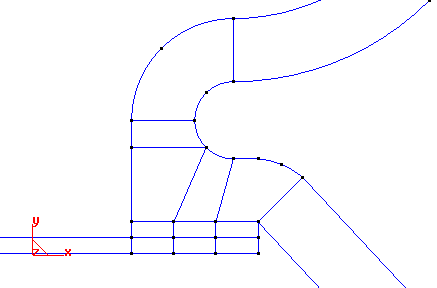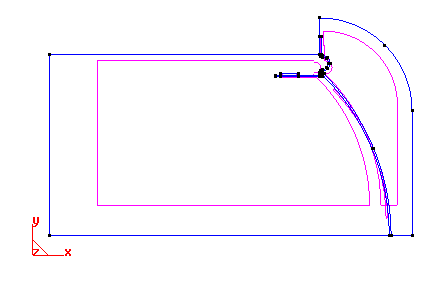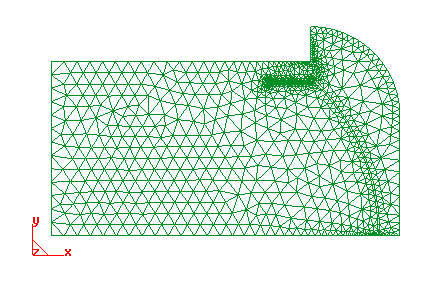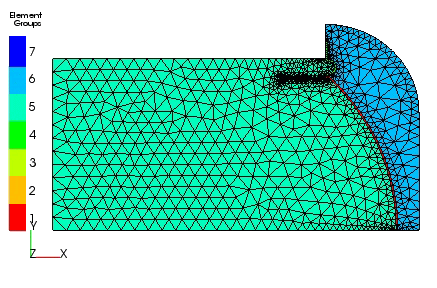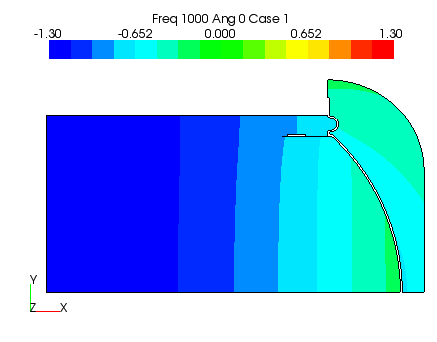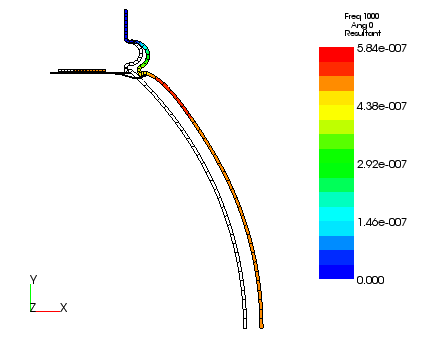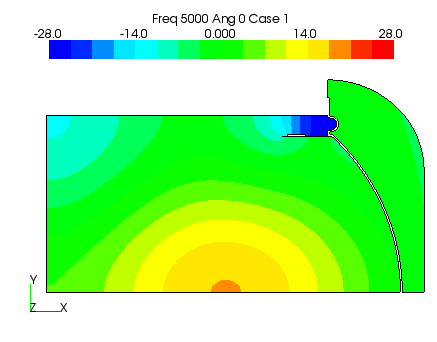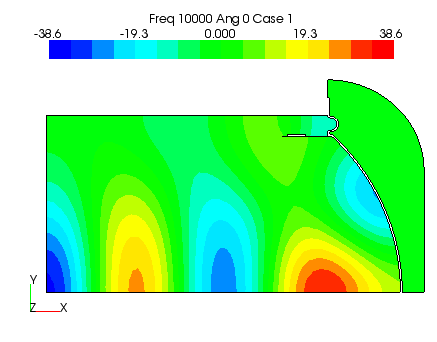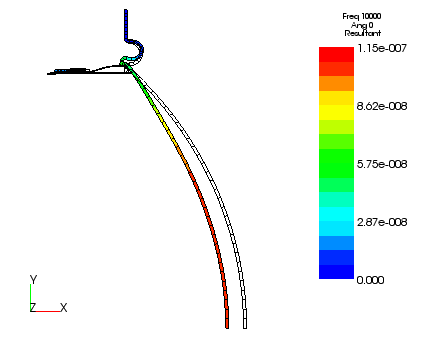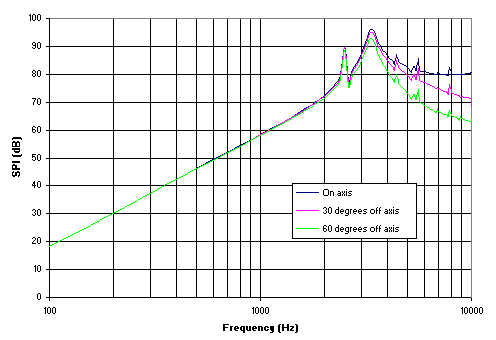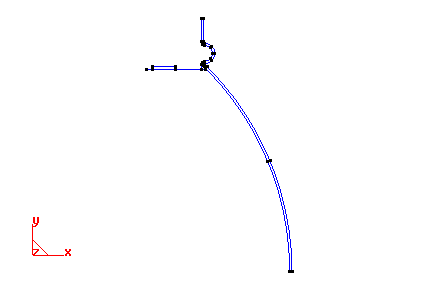
Import CAD geometry and repair geometry (if necessary)
Note: If care has not been taken in the creation of the CAD information
some repair work on the geometry may have to be performed, i.e.
if lines do not always meet at co-incident points and lines are not
where required for element generation. It is fairly straightforward
to delete/create points and lines in the correct place. However,
it is best to avoid having to do this repair work by thinking ahead
to what the FE model is likely to require when creating the initial CAD data.
